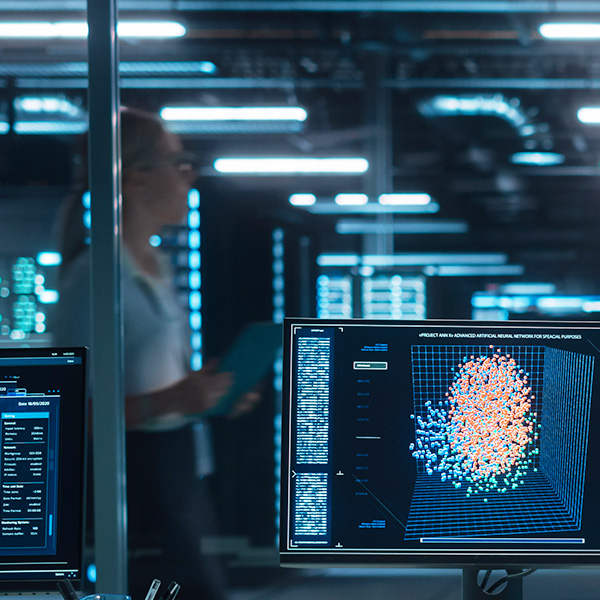

SPONSORED
Powering and Connecting the Hyperconnected Building
Edge Infrastructure is Enabling Enterprise Networks to Continually Adapt and Evolve
By Commscope | February 27, 2024
Read Time: 5 Minutes
Commercial buildings face increased demands for greater productivity and profitability while addressing the urgency of man-made climate change. This puts IT/OT networks under pressure to support more data, connected devices, and automation, all while lowering their environmental impacts. Aggravating the situation is an intensifying lack of skilled technicians who can install and manage the growing and converging building networks. CTOs and building network managers are now looking beyond traditional LAN/IP architectures and toward new edge-based infrastructure designs that support the IoT/IIoT connectivity and manageability that typify today’s hyperconnected building. In this article, we provide an overview of the CommScope Building Edge Infrastructure (BEI) and how it enables enterprise IT/OT networks to continually adapt and evolve in support of the ever-growing numbers of connected devices in use today.
Network Densification
Building networks must provide lower latency data performance and more power at the edge. The number of connected devices will double from 2018 to 2025. Some will be dedicated to IT networks, others to OT, and still others to IoT or IIoT. In some cases, economics and operational efficiencies will dictate that some segmented networks converge. In addition to providing gigabit data speeds (and above), many of these devices also need to be powered. Therefore, the building’s network infrastructure must also serve as a critical power delivery system—able to connect and transport power and data, reliably and efficiently, particularly to the network edge. As these pressures increase, new and innovative approaches to network design and deployments must be considered.
Deployment Speed
As the building network’s value and the cost of downtime increase, deployment speed is emerging as the new currency. Being able to quickly and flexibly deploy network assets will be imperative as building population needs grow and evolve over time. When we speak of deployment, we’re primarily referring to design and installation. Network design has long been a bottleneck in the deployment process. As network diversity and complexity grow, the time needed to develop and model new designs increases. Accelerating the design of networks and their subsystems by using a modular, repeatable approach would enable faster and easier deployment. But what does this look like on a practical level? At the same time, accelerating installation times is becoming more critical as well as more difficult. The industry is currently experiencing a historic shortage of skilled labor, which doesn’t appear to be short term. Demand for electrical and datacom installers is outstripping supply by a two-to-one margin. Building network managers are looking to their infrastructure partners for solutions that enable installers to complete more projects in less time with potentially smaller sized crews. That suggests more pre-connectorized, prefabricated solutions, but is that enough? And what exactly does that look like?

Sustainability
Finally, as the intensifying effects of man-made climate change grow into existential threats, building networks are coming under closer scrutiny regarding their sustainability and efforts to be part of the solution. Over the past few years, greenfield networks have made significant strides in terms of enabling building decarbonization and a more circular ecosystem. Efforts include supporting networked HVAC and energy monitoring, controlling lighting, and monitoring occupancy. But building networks are now being asked to be as sustainable as the building operations they support. As the network footprint expands in response to increasing user demands, network managers are being challenged to re-evaluate network components and architectures in order to lower the embodied and operational carbon impact of the building network or building technology.
These are three critical and foundational challenges facing today’s CTOs and network managers. Before outlining a potential solution, we will take a closer look at the traditional building network and the lessons it offers going forward.
A Brave New Edge-Based World
The term “Web 4.0” is typically reserved to describe the accelerating digital expectations for always-on, omnipresent connectivity in the consumer sector. But it has quickly taken root in commercial facilities of all types. More and more devices—both those that serve end users as well as those that inform and control a growing number of automated building systems—are being deployed. As network managers plan their response to this newest network disruption, their focus is on delivering more power and bandwidth on the edge and keeping deployment times and costs in check while remaining true to the environmental objectives that have become the new normal. The power and bandwidth levels will continue to rise incrementally, even as the pool of skilled installers and network techs shrinks. The traditional structured cabling network architecture that has served the industry so well for so long still has a critical role to play going forward, but—for some of the larger building environments—the network performance, deployment and management requirements seem to suggest an alternative solution.
Building Edge Infrastructure (BEI) is one such alternative with a variety of advantages. With its technology-agnostic design, simplified distributed topology, and high-bandwidth fiber, BEI can address the new challenges of today’s hyperconnected, edge-based applications. Whether looking to deploy bandwidth and power to the edge quickly and efficiently, or to deploy a more sustainable network, BEI gives network designers and architects a scalable, adaptable path forward—today and well into the future.
The Solution to Powering and Connecting the Hyperconnected Enterprise
The CommScope Constellation building edge infrastructure platform is a streamlined, modular, and adaptable power/data solution specifically designed for today’s hyperconnected enterprise networks. It combines fault managed power, hybrid power/data fiber, and ceiling-based constellation in an easy-to-deploy star topology.
The result is a simplified, scalable network that dramatically reduces the time, cost and complexity of supporting connected devices, in-building and across campus. Compared to traditional LAN/IP solutions, SYSTIMAX® Constellation also eliminates the need for a significant amount of copper cabling, network components and even entire telecom rooms—helping you decarbonize the building and advance your ESG initiatives.

ABOUT THE SPONSOR
This article was brought to you in partnership with Commscope.
CommScope designs, manufactures, installs, and supports the hardware infrastructure and software intelligence that enable our digital society to interact and thrive. Working with customers, they advance broadband, enterprise and wireless networks to power progress and create lasting connections.



